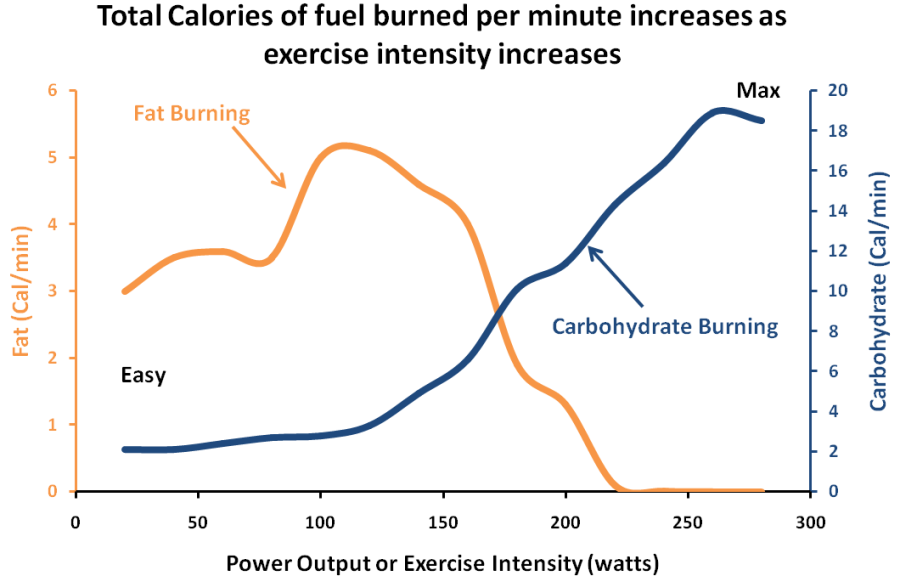I would have thought that this topic has been “done to death” over the past 20-years but very recently I was reading an article that quoted a major fitness blogger who states that it is better to exercise and burn fat directly than to burn Glycogen (Carbohydrate)!!!
I wanted to write a short piece about this recent statement and the positives and negatives of such advice.
Firstly, why does the body change from fat to Glycogen and vice versa during the day?
Fat is basically a dense version of Glycogen – it is a way of the body storing huge amounts of energy and when required, fat can be metabolised to product energy for what ever activity is required (through lipolysis and gluconeogenesis).
The number 1 factor that determines whether the body burns fat or Glycogen is the availability of oxygen (assume for now that the body has adequate supplies of both fat and Glycogen).
More oxygen is required to burn fat (fat produces approximately 8-15% less ATP per litre of oxygen than does Glycogen).
If you are unable to adequately supply the body with the required oxygen (you are needing ATP faster than what this metabolic process can provide), then your body will rely more on the burning of Glycogen (which is a limited supply compared to the almost limitless fat stores).
So to burn fat directly, based on the above metabolic information, you must exercise at a lower intensity than what you would if you were burning mainly Glycogen.
HIIT
Common popular training methodologies (eg HIIT (HIGH INTENSITY INTERVAL TRAINING)) are out of bounds if you are looking to burn mainly fat directly.
LISS
There is a new term doing the rounds, LISS – LOW INTENSITY STEADY STATE.
LISS isn’t new – any time you are walking comfortably on a treadmill or riding your bike without your heart rate going through the roof you are working in the LISS range.
Yes it is true that you are likely to burn fat directly using this mechanism (the body likes to burn fat directly where possible because of the amount of energy per fat gram compared to Glycogen), but what is more important is the total amount of energy you burn and often the amount of time you have to exercise in the first place.
If we view the following graph, you will see that it is much easier to burn a higher rate of calories/minute when burning Glycogen than when burning fat.

What was missing from this recent article was the fact that the moment you finish exercising in the LISS range, there is no further energy consumption, you body quickly returns to an equilibrium state and your basic metabolic rate becomes the main calorie burning factor.
When performing HIIT (and variants), firstly you burn many times more calories/minute than you do in LISS but also there is an oxygen deficit that is generated at the end of this exercise and this deficit has to be replenished (mainly from the break down of fat) so that if we look at exercise over the long term (24-hours rather than the exercise session only), then we see that we burn significantly more calories using the HIIT methodology than we do using LISS.
Of course, if you have all day to exercise, you could train in the LISS range for several hours and burn the same number of calories that you can achieve through a 30-45min HIIT workout – but one of the reasons for the popularity of HIIT was that it doesn’t take all day to achieve.
One aspect of daily life that can incorporate a LISS type approach (and still get your HIIT fix!) is to increase the component of your Total Daily Energy Expenditure (TDEE) known as NEAT (Non Exercise Activity Thermogenesis (which means non exercise energy expenditure)).
Surprisingly, NEAT can make up 15%+ of your total daily energy expenditure (depending on your daily activity levels) meaning if you crank this aspect of your metabolism up as high as you can, then the total energy expenditure from exercise (known as Exercise Activity Thermogenesis) is less important for any required weight loss goals (allowing you to focus on exercise to achieve other important goals – such as strength gains, muscle tone & improved posture).
In a future article I will delve more into Metabolism and all aspects of energy expenditure that makes up this process.


